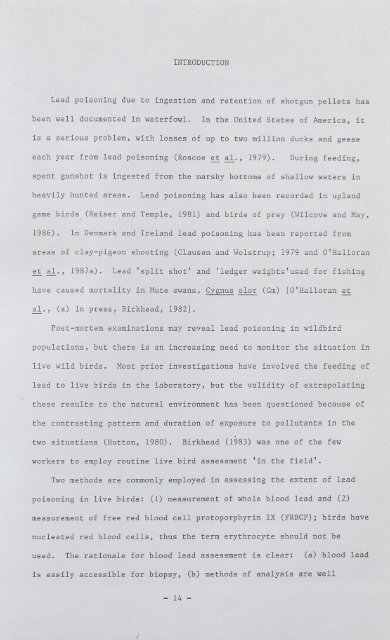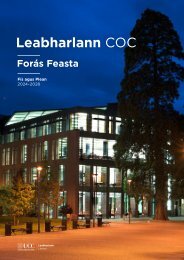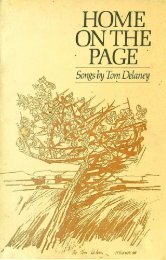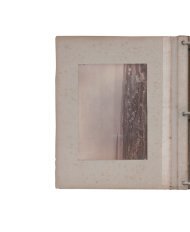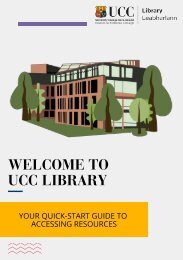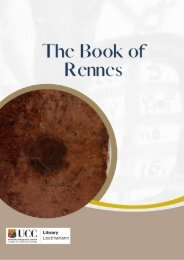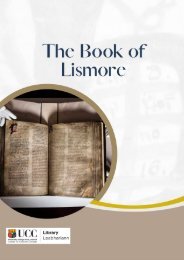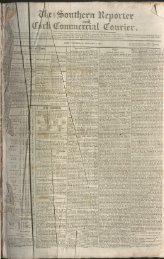Lead Toxicity in Mute Swans
LEAD TOXICITY IN MUTE SWANS Cygnus olor (Gmelin). By JOHN O'HALLORAN A thesis submitted to the National University of Ireland in candidature for the degree of Doctor of Philosophy September 1987
LEAD TOXICITY IN MUTE SWANS
Cygnus olor (Gmelin).
By
JOHN O'HALLORAN
A thesis submitted to the National University of Ireland
in candidature for the degree of Doctor of Philosophy
September 1987
Create successful ePaper yourself
Turn your PDF publications into a flip-book with our unique Google optimized e-Paper software.
I<br />
INTRODUCTION<br />
<strong>Lead</strong> poison<strong>in</strong>g due to <strong>in</strong>gestion and retention of shotgun pellets has<br />
been well documented <strong>in</strong> waterfowl.<br />
In the United States of America, it<br />
is a serious problem, with losses of up to two million ducks and geese<br />
each year from lead poison<strong>in</strong>g (Roscoe et al., 1979).<br />
Dur<strong>in</strong>g feed<strong>in</strong>g,<br />
spent gunshot is <strong>in</strong>gested from the marshy bottoms of shallow waters <strong>in</strong><br />
heavily hunted areas.<br />
<strong>Lead</strong> poison<strong>in</strong>g has also been recorded <strong>in</strong> upland<br />
game birds. (Reiser and Temple, 1981) and birds of prey (Wilcove and May,<br />
1986). In Denmark and Ireland lead poison<strong>in</strong>g has been reported from<br />
areas of clay-pigeon shoot<strong>in</strong>g (Clausen and Wolstrup; 1979 and O'Halloran<br />
~al., 1987a). <strong>Lead</strong> 'split shot' and 'ledger weights'used for fish<strong>in</strong>g<br />
have caused mortality <strong>in</strong> <strong>Mute</strong> swans, Cygnus olor (Gm)<br />
[O'Halloran et<br />
al., (a) <strong>in</strong> press, Birkhead, 1982].<br />
Post-mortem exam<strong>in</strong>ations may reveal lead poison<strong>in</strong>g <strong>in</strong> wildbird<br />
populations, but there is an <strong>in</strong>creas<strong>in</strong>g need to monitor the situation <strong>in</strong><br />
live wild birds. Most prior <strong>in</strong>vestigations have <strong>in</strong>volved the feed<strong>in</strong>g of<br />
lead to live birds <strong>in</strong> the laboratory, but the validity of extrapolat<strong>in</strong>g<br />
these results to the natural environment has been questioned because of<br />
the contrast<strong>in</strong>g pattern and duration of exposure to pollutants <strong>in</strong> the<br />
two situations (Hutton, 1980).<br />
Birkhead (1983) was one of the few<br />
workers to employ rout<strong>in</strong>e live bird assessment '<strong>in</strong> the field'.<br />
Two methods are commonly employed <strong>in</strong> assess<strong>in</strong>g the extent of lead<br />
poison<strong>in</strong>g <strong>in</strong> live birds: (1) measurement of whole blood lead and (2)<br />
measurement of free red blood cell protoporphyr<strong>in</strong> IX (FRBCP); birds have<br />
nucleated red blood cells, thus the term erythrocyte should not be<br />
used. The - rationale for blood lead assessment is clear: (a) blood lead<br />
is easily accessible for biopsy, (b) methods of analysis are well<br />
- 14 -


